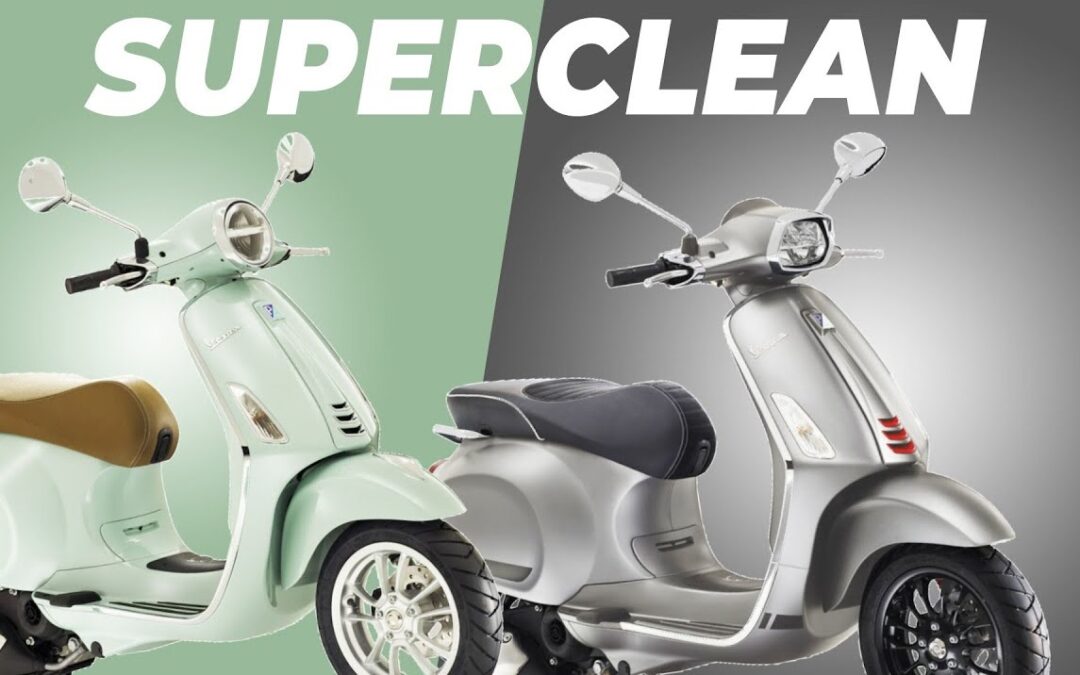Here are a few Scooter Central Workshop tips on getting the best out of cleaning your scooter the professional way. Our techs have been working with scooters for years, so they know a thing or two that you can use when you wash and maintain your scooter at home.
Remember it’s always best practice to wash your scooter in the shade or at least out of the heat of the sun. This prevents the detergent drying as you wash.
Don’t use a power washer to wash your scooter. The intense pressure is bad for paint, electrics and switches in particular.
Another don’t, is to not wash straight after a ride when the exhaust and other components are hot.
If your scooter is quite dirty, we recommend using the two bucket method to wash off all that grime. One bucket is set up with water and bike wash detergent. This will remain your clean bucket. The second bucket has fresh water only in it.
Now, let’s start off by putting your scooter on its centre stand so it’s at its most stable. Hose off the body of the scooter using normal water pressure. (A good trick is to cover the saddle with a garbage bag if you intend on riding soon after.) Make sure not to hose up into the engine bay where there are sensitive electrical components.
Now that the scooter has any loose dirt removed and had a bit of a soak, we can get to the two-bucket process. The idea is to soak a microfibre cloth or sponge in the detergent bucket and wash the scooter starting from the highest point. When the sponge feels like it needs a rinse, rinse it in the freshwater bucket and the dirt will be removed from the sponge. Then its back into the suds again ready for the next section you’ll clean. This way it’s unlikely the sponge will retain dirt and scratch the surfaces.
Work your way down the scooter leaving the wheel rims to last (they are often the dirtiest part of your scooter).
Now sponge the rims and give the sponge a thorough rinse in fresh water so it’s ready for next time. Now it’s time for rinsing the whole scooter with the hose.
Once you’ve rinsed off the suds its always best to chamois dry (or you can use another micro fibre cloth). If you leave the beaded water to dry it will be noticeable and won’t have a great finish.
If your scooter is a Vespa, you can also give it a polish once the scooter is completely dry with a quality car body polish. We polish our scooters every 3 months in Sydney as we have plenty of salty sea breeze here on the coast.
If you have the more common plastic panel scooters, there are specific plastic polishes you can buy at the auto parts stores.
A couple of good tips is to make sure you don’t rub too hard as it can scuff the surface. This is particularly important on painted matt finish scooters. If you rub hard on a matt finish it polishes the finish smooth and you can’t regain the matt look again.
If you have a multitude of bugs stuck to the front body, give them a good soak to loosened up before using the sponge. If that doesn’t work there are bug off products, but I’ve seen Dave our head mechanic give bugs a good douse in Mr Sheen which seemed to work just as well.
Washing your machine regularly is a great way to keep salt and grime off your scooter. It also gives you an intimate look at your ride where you may discover issues developing that you may need to tell your mechanic about at the next visit.
Another good tip is to check your scooters vitals when you do a wash. Check indicators, horn, headlights and tail lights. I also take a peak at tyre tread, the oil level and have a quick look for any potential oil leaks.
So that’s how the pros do it and it’s not that hard. Go to it!

